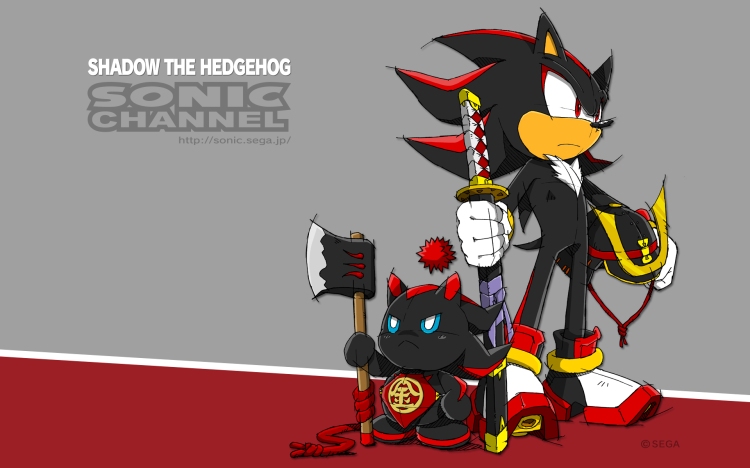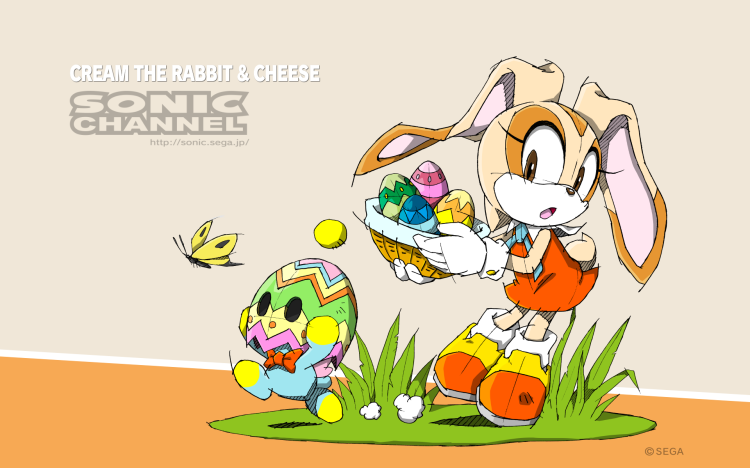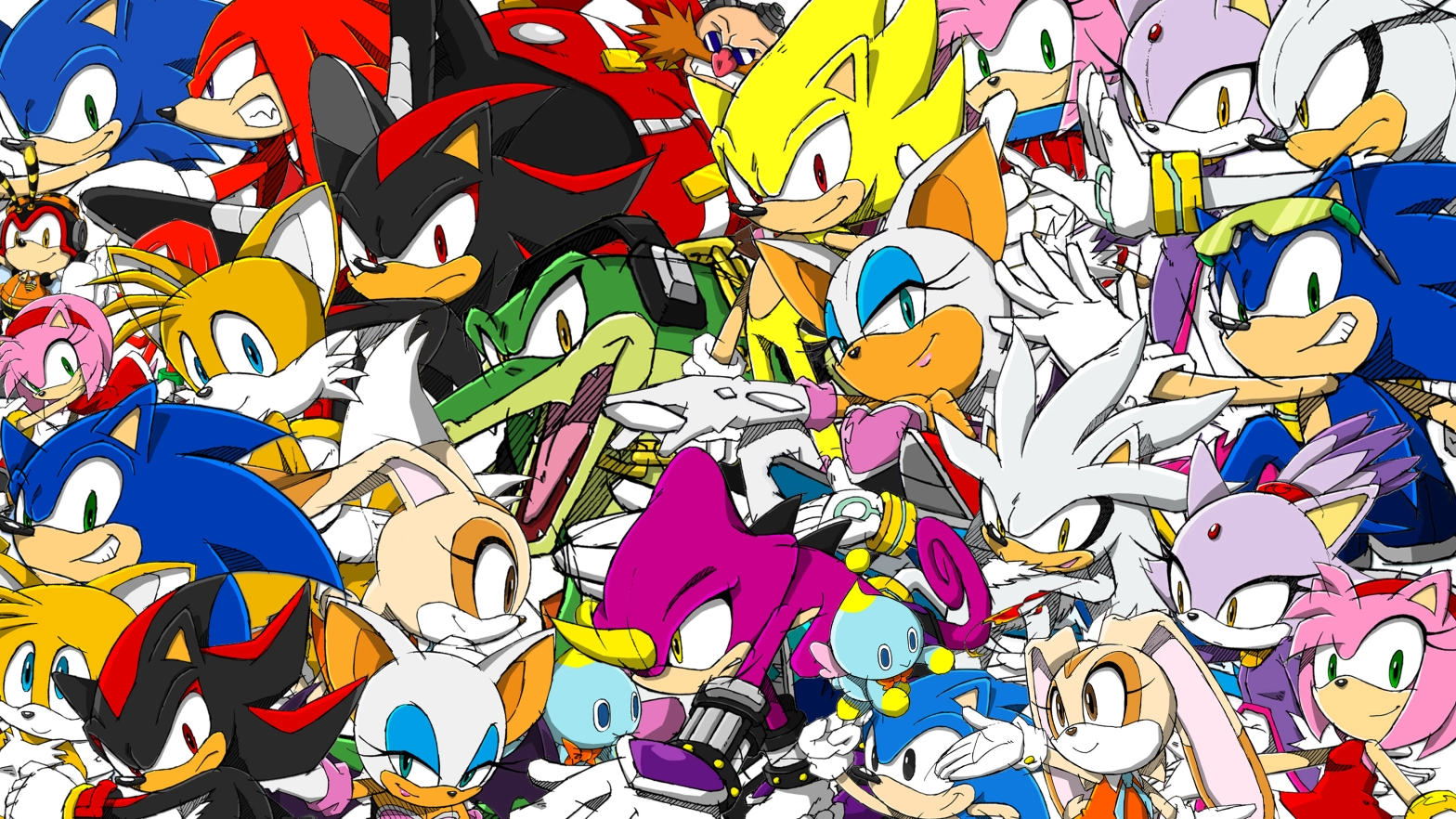For almost two decades now, the expansive cast of the Sonic the Hedgehog series has been a controversial topic of debate. If you take a look at any professional review of a Sonic game in the last 10 years, you’re practically guaranteed to see at least one paragraph either deriding the presence of Sonic’s friends, or celebrating their exclusion altogether. As the title suggests, this essay is going to discuss the the argument for and against the inclusion of multiple playable characters in Sonic the Hedgehog games, in both the 2d and 3d ones.

Sonic the Hedgehog’s history with multiple playable characters dates all the way back to the 1992 release of Sonic the Hedgehog 2 for the Sega Genesis/Mega Drive. Sonic 2 introduced the world to Miles ‘Tails’ Prower, Sonic’s twin-tailed partner in crime. Two years later, Sonic the Hedgehog 3 served as the introduction for Knuckles the Echidna. One of the things that people love most about Sonic 3 is the fact that every character shares the same basic moveset. Sonic, Tails and Knuckles can all jump, run fast, perform the Spin Dash and even transform using the Chaos and Super Emeralds (though Tails can only transform using the Super Emeralds).
However, each character also has their own unique set of abilities. Sonic, in addition to being the fastest, can take advantage of the Insta-Shield, as well as the various elemental shield abilities. Tails can fly and swim, and Knuckles, while having a lower jump compared to the other two, can glide, climb walls and break barriers to reach certain level routes that are exclusive to him.

This design philosophy extends to the majority of the 2d Sonic games that followed the Classic era. The Sonic Advance trilogy on the Game Boy Advance saw the return of the classic trio, along with Amy Rose and Cream the Rabbit. Even the Sonic Rush games on the Nintendo DS, which featured a new evolution of 2d Sonic the Hedgehog, perfectly executed on this idea. Sonic and newcomer Blaze the Cat have access to all of the standard 2d Sonic abilities, the new boost technique and their own unique trick moves.
The main point I want to stress about the 2d Sonic games is the fact that every character plays similarly. As I said before, every character can do things like run fast and Spin Dash (with the exception of Amy in the first Sonic Advance title), but they each have their own unique abilities that make subsequent playthroughs more enjoyable, as you are able to take on previously beaten levels with new perspective, and the potential to find new routes. And it is this very point that serves as the one major criticism for playing as Sonic’s friends in the 3d games.

Let’s start with Sonic the Hedgehog’s 3d debut, 1998’s Sonic Adventure. Sonic Adventure features 6 different playable characters: Sonic, Tails, Knuckles, Amy, Big the Cat and E-102 Gamma. Sonic plays about how you would expect in his transition from 2d to 3d. He can still do all of the things he did in 2d, just in a bigger, more stylish 3d environment. Tails is a similar case, the only major difference between their objectives being the fact that all of Tails’ levels are races, as opposed to Sonic’s simply being “get to the goal”.
Knuckles also plays about how you would expect, with his speed, gliding and climbing abilities being fully intact. But rather than put him in speedy 3d platforming stages like Sonic and Tails, Sonic Team decided to put Knuckles in open sandbox environments, and force him to collect Master Emerald shards. Knuckles still feels great to control in Sonic Adventure, it’s just odd that they made him into a treasure hunter.

Sonic Adventure’s remaining bunch of playable characters is where things start to get a little tricky, as none of them play anything like the aforementioned trio. Amy Rose plays like a more standard 3d platformer with no real speed, Gamma is an arcade style shoot-em up, and Big the Cat has to fish.While an argument could be made for Amy not being too bad to play as, and Gamma’s stages are so short that they don’t feel very intrusive, there’s really no excuse for Big’s fishing gameplay.
Sonic Adventure was the first game that started to move away from the ‘similar movesets with unique abilities’ design philosophy that I mentioned earlier, and it’s sequel didn’t really do anything to rectify this. Sonic Adventure 2 has six playable characters, but there are only 3 different gameplay styles this time around, as opposed to the first game’s six. Sonic and Shadow the Hedgehog play similarly to how Sonic did in the first game, Tails and Dr. Eggman continue Gamma’s shooting levels and Knuckles and Rouge the Bat are, once again, looking for Master Emerald Shards. This effectively means that only one third of the game features the high speed platforming gameplay that the Sonic the Hedgehog series became famous for, and herein lies the problem with many of the 3d Sonic titles.

In an effort to pad out the game so that players don’t see everything there is to see in a handful of hours, Sega and Sonic Team notoriously added in different gameplay styles in order to extend the runtime of the majority of their Sonic games released in the 2000’s. This is why many people groan when they see Sonic’s friends in a 3d game, as they feel that the only character that has ever really been done justice in 3d is Sonic himself. Nobody bats an eye when someone besides Sonic is playable in a 2d game, and in fact this is something that is expected, as games like Sonic the Hedgehog 4 were criticized by fans for the lack of Tails and Knuckles.
This isn’t to say that secondary characters don’t belong in 3d Sonic games. As I said before, characters like Tails and Shadow, at one time, played similarly to how Sonic played in the two Adventure games, and the reason Blaze the Cat is one of the most popular characters in the series is because she has played exactly like Sonic, but with her own unique abilities (tired of this phrase yet) in every single one of her playable appearances. To this day, the only 3d Sonic game that has perfectly nailed this idea is, weirdly enough, Sonic & The Black Knight. Sonic, Knuckles, Shadow and Blaze all share the same basic moveset, but have their own unique skills (ha, I didn’t say abilities this time).

One argument against secondary characters in the 3d games, is the modern Sonic boost gameplay as a whole. While games like Sonic Adventure and Sonic Heroes featured a pretty even split between speed and platforming/exploration, the boost gameplay that started with Sonic Rush and Sonic Unleashed is all about speed. As such, I don’t really know what characters like Tails and Knuckles add to this style of gameplay. Their abilities are much better suited for the more exploration friendly Adventure games, or even Sonic Lost World (though I think Sonic Team is pretty much done with this gameplay style), something that the boost gameplay just isn’t really about.
However, I could definitely see Shadow and Blaze as Sonic’s modern boost counterparts, and idea that I’ve fallen in love with over the past couple of years. It’s pretty much accepted that Tails and Knuckles are staples of 2d Sonic gameplay, and we even occasionally get to play as Amy Rose and Cream the Rabbit. None of these characters have any abilities that are well suited for the speed centric gameplay of Sonic Unleashed or Sonic Generations, but Shadow and Blaze have both proven to play exactly like Sonic does in these games. They both have variations on Sonic’s boost and homing attack, and I don’t think it’s too much of a stretch to say that they should both easily be able to drift, stomp, slide and quick step.

Sonic’s friends can and have worked in a 3d space, but Sega and Sonic Team never go all the way with it. They were somewhat close with Sonic Adventure, but have went farther and farther away with every subsequent 3d game, with the exception of Sonic & The Black Knight. The boost gameplay seems to be the future of 3d Sonic games, and I would love to be able to eventually play as Shadow and Blaze, as I feel that they would add in the variety that many fans have been looking for in recent games. And should they ever return to the Sonic Adventure format, I would love to see a genuine attempt at making Sonic, Tails and Knuckles into the speedy power trio that they were in the 2d games.

Knuckles would make an excellent addition to the boost formula, as various mods have shown.
Always rooting for these characters to get their chance one day.
LikeLike
I definitely want to see more playable characters in the future, and I am legitimately curious to see how they’d make Knuckles’ more exploration based gameplay fit with the speed of modern Sonic games. Thank you for reading and commenting!
LikeLike
I couldn’t help checking back on this excellent piece and giving it another read. Frankly, there’s so much more that I should have included in my initial comment in terms of feedback. Your description of how playable characters have worked versus how they haven’t worked throughout history is brilliant; all of the most important details noted with games like the Sonic Advance Trilogy and Black Knight.
This whole concept of retaining the core gameplay style of sonic with only minor tweaks across different characters rather than giving them a completely different gimmicky style. It’s expressed beautifully here.
I really hope more people read & write posts like these because it’s even more relevant today in the 2022 lead-up to Sonic Frontiers than it already was back in 2017 with the lead-up to Forces.
LikeLike